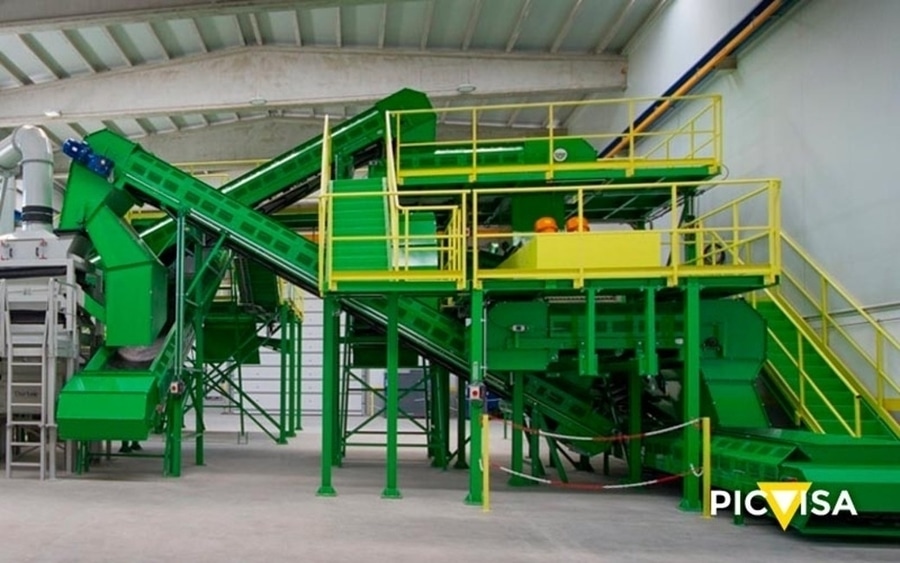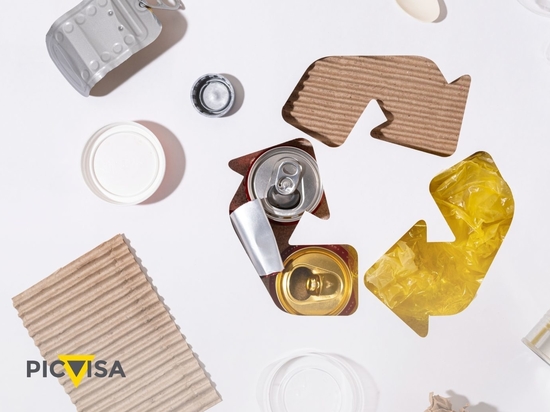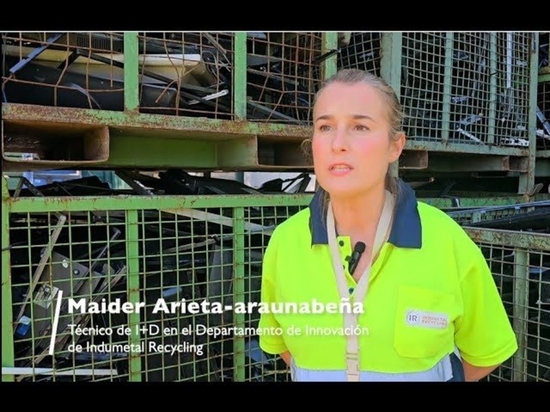
#White Papers
THE FUTURE OF WASTE MANAGEMENT: FROM WASTE TO RESOURCE
THE FUTURE OF WASTE MANAGEMENT: FROM WASTE TO RESOURCE
The process of digitizing the three stages of waste management (collection, sorting and treatment), as we explained in our last blog post, is a reality. This complex process of transformation and innovation is not, however, the end point on the road to more sustainable, efficient and cost-effective waste management. With the digitization of recycling underway, new questions are opening up: What are the next steps? What new technologies are coming? What will the waste management of the future look like?… Whatever the question, the answer always lies in technological innovation.
THE FUTURE IN WASTE MANAGEMENT: ECODESIGN AND BIOPLASTICS
So what is the key to such innovation in the 4th stage of the waste management process? The key is the fact that it transcends the waste management process and its application starts before the products become waste. Europe, for example, wants to promote eco-design to make these products, especially packaging, more durable, reliable, reusable, upgradeable, repairable, easier to maintain, refurbish and recycle, as well as more energy and resource efficient. The ultimate goal is to significantly improve the circularity of products, their energy performance and other aspects of environmental sustainability.
This eco-design is complemented by the use of new materials such as bioplastics, generated from biological materials instead of petroleum. This is the case of polylactic acids (PLAs), which are extracted from corn or sugar cane and used in food, or polyhydroxyalkanoates (PHAs), produced from microorganisms and usually used in the medical and pharmaceutical sector. These bioplastics can be biobased but non-degradable (PE), non-biological but compostable (PBAT), or biobased and biodegradable (PLA).
THE FUTURE IN WASTE MANAGEMENT: EMERGING TECHNOLOGIES
Once the product becomes waste, we are in the first phase of its management, collection, which also looks towards a future beyond digitalization. Here the key is that the process is done thinking about minimizing the percentage of waste that cannot be recycled and ends up in a landfill or incinerated. In this sense, some countries, such as Norway have launched pilot programs that abandon selective collection and bet on mixed waste collection and its subsequent classification. With this initiative, the percentage of recycled material that is put back in value in the most optimal and sustainable way has been significantly increased.
Geographically speaking, Europe leads innovation in the creation of secondary raw materials from advanced recycling. According to a study by the European Patent Office (EPO), 30% of global patents in this area come from European countries, such as Germany, which leads this specialty. This recycling is essential, for example, to classify mixed plastic waste, such as composite and multilayer plastics. The desire to create new materials from waste is accelerating in Europe emerging technologies, such as so-called advanced recycling, , which can be useful as an outlet for waste that cannot be processed mechanically and which, for the moment, is mainly carried out with chemical technologies.
THE FUTURE IN WASTE MANAGEMENT: EFFECTIVE SORTING IS CRITICAL
Continuing with the previous point, however, although it is true that innovation promises great successes in the future, mechanical recycling is still currently the most profitable means to recover and revalue waste..
This new paradigm of waste collection also affects sorting plants, and that means that they will have to increase both in number, to be able to treat the enormous volume of waste, and in technification, to optimize recycling and obtaining new materials to the maximum.
Effective recycling is based on effective and efficient sorting that recovers valuable materials, minimizes the amount of material sent to landfills and allows waste to be revalued. For this, the future goes through continuous innovation in separation and classification technologies such as magnetic and induction separators, screening systems, sensors, robots, optical separators or laser spectroscopy (LIBS), a technique used in metal detection.
At the moment, the most cutting-edge innovation goes through the development of material separation technologies such as those implemented in PICVISA, where we not only work in the field of innovation, but also customization, creating ad hoc solutions. This is on-demand innovation.
That is why at PICVISA this continuous innovation is explicit in our TEST CENTER, a test plant inaugurated in 2020 and located in Calaf (Barcelona) where any customer can perform tests with their own materials. It is an industrial-scale testing laboratory, 800 square meters, specialized in product testing for recycling and urban and industrial waste management. This facility is fully automated and has installed an ECOPICK robot unit, based on artificial intelligence and two ECOPACK and ECOGLASS units, which have state-of-the-art technology in artificial vision, sensors, mechanical treatment machinery and optical and magnetic separators. In addition, the TEST CENTER is complemented by our BRAIN unit, a service for analyzing your process, your product, your flow and your objectives to prepare a customized study. This is how we work on developing customized technologies on demand.
FROM WASTE TO RESOURCE
Innovation in the different stages of waste management also affects the last of them, treatment. In this sense, technological advances to avoid controlled deposits focus mainly on the use of waste to develop materials with high added value and more sustainable, which is known as upcycling. In addition to more environmentally friendly plastics, new treatment techniques, such as catalytic processes, will allow this waste to be viable raw materials for generating clean hydrogen or high-quality fuels.
Following this line, there are initiatives where technological innovation to prevent waste from ending up in landfills focuses directly on energy production, as is the case in Sweden, a country that in 2021 lowered the electricity bill of 250,000 homes thanks to the incineration, with low emissions, of waste to produce energy. In addition, it should be noted that this saving is a valuable economic incentive to maintain the commitment of citizens to recycling, which has made this project a model to follow that Denmark and Finland have already begun to imitate.
The recycling sector is in a moment of profound transformation towards greater circularity: ecodesign, bioplastics, emerging technologies, advanced recycling, upcycling, fuel generation… They will be the words that draw the future of waste management, some of the pillars on which the 4th stage of the process will be built.
For now, technological innovation is focusing on improving facilities and industrial processes and enhancing the use of data and traceability of waste. All with the aim of increasing their recovery and preventing them from reaching landfills and incinerators. The success of this transformation also involves, of course, a change of mentality, and see resources where we now see just waste.







